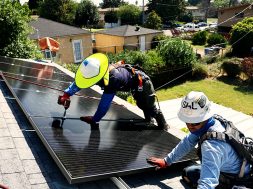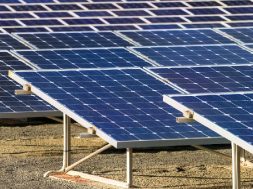
DC solar products are lighting up rural India: What’s driving the increased demand?
India is at a growth curve, largely fuelled by the expansion of domestic manufacturing. The country’s ‘Make in India’ initiative encourages a need for new infrastructure, which requires more industrial energy. India will add nearly 600 million new electricity consumers by 2040, as per the International Energy Agency (IEA). Taking the increasing population into account — along with a high policy priority to make power accessible across India — renewable forms of energy offer the best solution.The rising demand for power along with extreme urbanisation makes the time ripe for India to embrace all things solar. While we observe a huge growth in its rooftop solar and grid market across the country, DC solar products are seeing good traction in rural India.
There are two main driving forces behind the increasing demand for DC products. One is the elimination of inverters. Venkat Rajaraman, CEO at Cygni Energy Private Limited, a company focused on Solar-DC microgrids, elaborates, “There is a global trend of distributed energy generation through roof-top solar panels, keeping the generation closer to the consumption. Since solar doesn’t generate 24×7 power, there’s a need to store the generated power. The energy from solar panels is stored in batteries and retrieved natively in DC power, thus eliminating the need for any further AC-DC and DC-AC conversions.” Secondly, homes and offices are gradually moving towards DC appliances because of a new level of efficiency it offers. They are gradually switching to LED bulbs and tube lights for lighting, electronic gadgets and even appliances like LED/LCD television and refrigerators, which were earlier powered by AC, are moving towards DC. Newer designs and products are DC-based, which work on solar-DC inverter-less controller.
“With the advent of power electronic integrated circuits, complete solar-DC solution for homes and offices are now possible,” says Rajaraman, adding: “AC made us force-fit appliances into an existing ecosystem which resulted in poor system efficiency due to unnecessary conversions. With appliances that offer AC to DC conversion, power was lost in two stages — while converting from DC to AC for retrieving power from battery (the role of a traditional inverter) and then from AC to DC for the appliance use. We were losing about 45 per cent of power in these power-dissipating AC-DC, DC-AC conversions alone. Hence, for consuming ten units of power, we were generating about 15 units. A converter in the front of the appliance helps to run it on DC. With the advent of power electronic integrated circuits, complete solar-DC solution for homes and offices are now possible. Our inverter-less products come with a grid interface which requires only one conversion with minimum loss.”
Cygni’s appliances are designed to run on solar energy at an off-grid location and are capable of connecting to the normal power grid seamlessly when placed in an on-grid scenario. Cygni’s solution also comes with a mobile app for remote monitoring which provides information and system health-check during operations and maintenance.
***
It’s hard not to notice that the variety of products in the market which run on DC is low. It is limited to lights, fans, television, inverters, lanterns, water and well-pumps, and air conditioners. Ifthikhar Javed, energy consultant, Smarter Dharma reveals, “So far, DC products have worked best when its size is small. Bigger appliances like refrigerators and air conditioners haven’t gone mainstream yet because DC at higher voltages are very dangerous and prone to efficiency losses which also why we generally use AC power. Besides, these are new technologies which are difficult to repair and often require bulky batteries to store additional power.”
“However, you’ll also notice that plug-and-play products like solar street lights and irrigation pumps are popular as they come with many advantages like easy installation. It is plugged into the ground and is ready to use. It requires no electricity to be pulled to it, uses a sensor-based system to power on and off, and require low maintenance. These are popular installations at large office premises, farms and even in rough, hilly terrains due to regular power cuts,” Javed adds.
In India, approximately 360 million people don’t have adequate access to grid-electricity because the grid doesn’t extend to their home. Moreover, 20 million receive less than four hours of electricity a day, as per a report titled ‘The business case for off-grid energy in India’ released by The Climate Group. Nidhi Modi, executive director, Mitva RAL, tells us, “India has a dire need for non-conventional forms of energy. By 2040, India will need 1000 GW of energy and 430 GW must come from renewable forms. As India’s energy demand goes higher, it’s time to bank on solar off grid. The country is facing rapid industrialisation and as urbanisation happens, aspirations increase as well. The rural market is huge and the energy requirement is increasing daily, and thermal energy cannot sustain this growth.”
While India is at a nascent stage and is facing teething issues in terms of quality of grid and infrastructure to fully utilise its solar potential, things are moving in the right direction — prices of raw materials are decreasing and technology is getting better, cheaper and more efficient. Modi adds, “The government has been introducing policies in favour of solar energy and has introduced subsidies for small homes and offices to use their rooftop space. Renewable energy is a need for survival.”
***
Rural India and its villages need solar power the most as electricity doesn’t reach them. Consider Proto village which uses solar panels, pump inverters and water pumps. The pump starts when sun rays hit the panel. It starts slowly and builds up pace with the intensity of the sun’s rays. Water is pumped all day until the sun goes down. The system requires no battery and hence, no maintenance. Though the capital expenditure was high, subsidies were available to bring the overall costs low.
While speaking to our sources, each one pointed out that rural consumers are their biggest market. They try to help consumers with no access to electricity or face power availability issues with load shedding for 5-18 hours. In such places, DC products and solar panels literally light up their lives. Sreyamsa Bairiganjan, India manager and agent model specialist, Arc Finance, USA, comments, “The cost of technology and manufacturing costs behind building a solar product has gone down considerably and the product designs have become more efficient and cheaper. Many global giants like Greenlight, Dlight and Barefoot Power have been in India for years because of the vast potential it offers. Amped Systems is entering and setting operations in India while we talk.”
The Indian market is ripe for products like lighting solutions and solar pumps. Rural India is looking beyond kerosene, wood and organic waste, and slowly realising that renewable alternatives like solar power are much safer and more cost effective. A rural Indian household consumes about 18 litres of kerosene a month and most of it gets used for light. The expense comes up to about Rs 150 a month. At that pace, a solar lantern’s cost can be recovered in about five months.
Ben Matthew, sales director — Global Partnerships (Asia) at Greenlight Planet Inc., points out the opportunity for solar beyond cost benefits, “Solar products ensure availability of power all throughout the day for rural households such as farmers, small businesses run out of homes and students. Solar panels produce DC current and store it in batteries used to power lights, home appliances, sewing machines and water pumps. This ensures a lifestyle enhancement in terms of better health and increased income due to more productive working hours.”
Greenlight Planet aims to provide solar products to villages and remote areas across the world. They guarantee that the lifecycle of its batteries lasts about 2,000 cycles with an average lifespan of five years. “Solar panels produce DC current and store it in batteries used to power lights, home appliances, sewing machines and water pumps. This ensures a lifestyle enhancement in terms of better health and increased income due to more productive working hours.”
***
However, the biggest challenge lies in reaching out to customers who live in remote areas like the Sunderbans. Bairiganjan agrees, “Not all solar product manufacturers and sellers have the capacity to make themselves reachable. This was their biggest challenge until a few years ago. Today, they find value in signing up with a good distribution network which financial institutions and rural banks have created. It enables them to reach out to their target customers, much of whom live in the Tier 3 sector.”
Matthew adds, “By partnering with other organisations and utilising their existing network, we ensure an effective distribution channel. We have successfully partnered with the micro-finance institutions, agricultural organisations, NGOs, CSR divisions, oil marketing companies and rural retail networks, and we now have an established network in several parts of rural India.”
***
The issue with Tier 1 and Tier 2 cities isn’t awareness. The irony is that awareness is high but people don’t have access or information about where to purchase solar products, or the subsidy regime available to them for a complete solar home. Bairiganjan says, “There is a potential market in bigger cities and people will buy solar products if it is made available easily. Private players, however, need to step up their game with an aggressive plan. Solar products like large inverters, refrigerators are available in the market today. There’s an evident gap here and solar companies need to ramp up to convert this need into an active demand by investing time and energy in creating awareness about their products. An outreach programme is required to make it more conventional. Even the government it working on this.”
So what can we expect in the future? For AC and DC to co-exist in households — with lighting, fans, television, mobile chargers and laptops running on a DC line as it is more efficient. “It’s the startups in India which will fuel this mainstream growth of solar DC products as they understand local needs better than international players. Companies like Solaire Direct, Sun Edison will revolutionise the commercial solar DC market in the country,” Bairiganjan shares.
The government too, has been proactive by offering subsidies for solar product, especially for farmers making solar water pumping systems available at a lower cost. It helps that the government is taking steps by providing subsidies and even organises essay competitions at schools and colleges. In the next 10 years, the cost of solar products and appliances will further decline and sellers can allocate more funds to promote it. Once technology becomes more efficient, we will reach a point when solar goes mainstream.
Though solar energy cannot replace thermal power entirely, we’ll have no choice but to generate a part of energy through renewable resources.
















